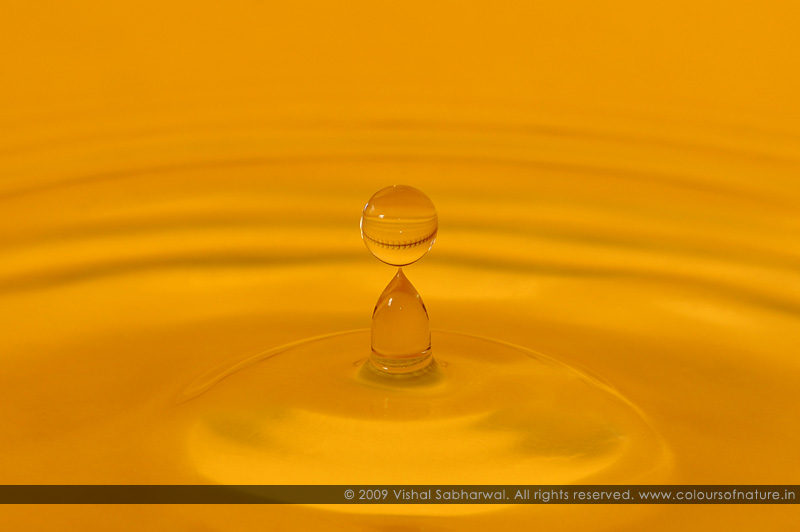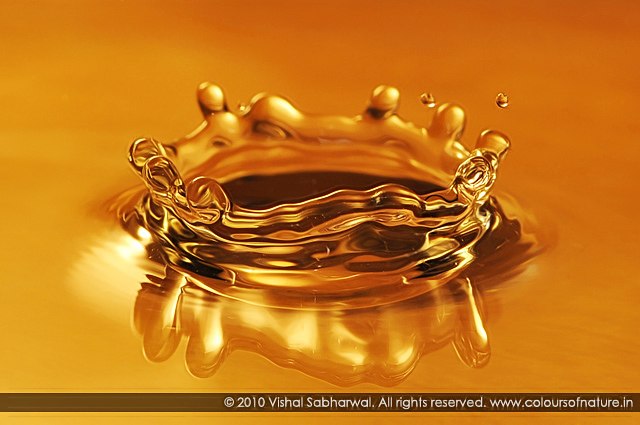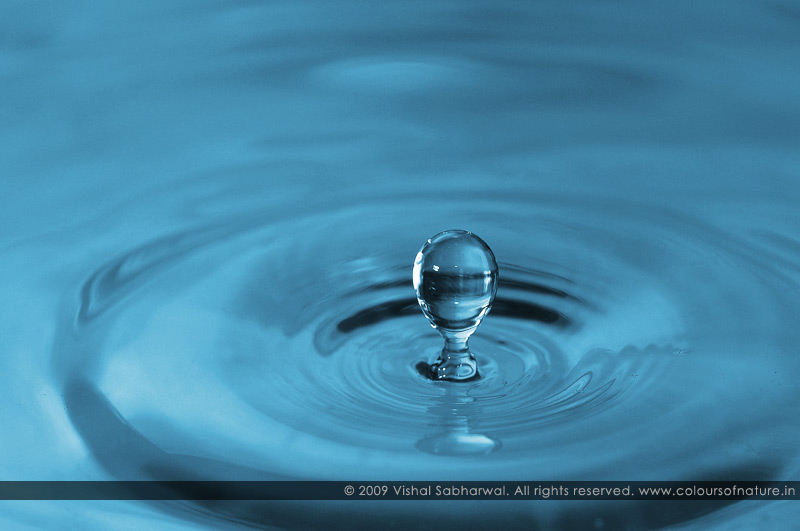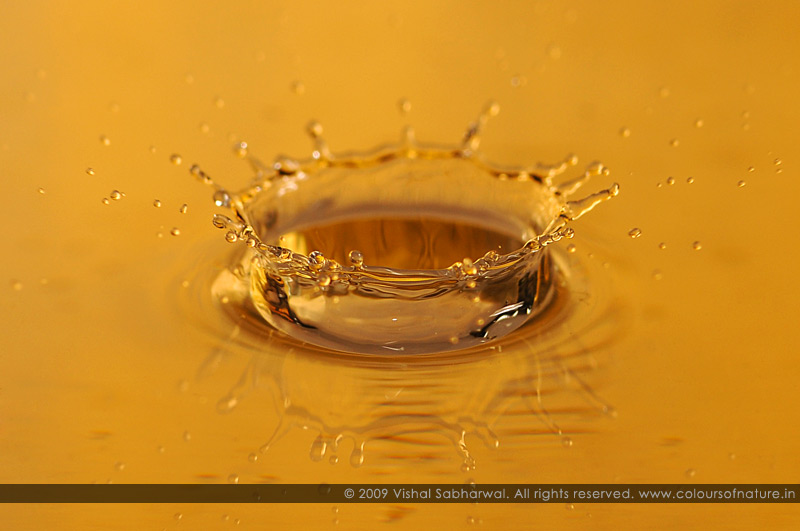Many a times we have watched those mind boggling documentaries on slow motion photography, be it a bursting water balloon or a bullet being fired from a gun. The Frames per Second (FPS) required to see that kind of action varies. For example, a water balloon being punctured can be photographed comfortably at much lower FPS compared to bullet being fired. It’s all about freezing the moment in time and the timing in doing so is the key.
Experimentation is the key to learning what is not known, that being said I will highlight my learning’s on how to photograph a water drop bouncing off water.

EXIF: Nikon D300 Nikkor 105 f/2.8 Nikon SB-800 on remote sync ISO 200 f/16 Shutter 1/250 White Balance – Kelvin 10,000 Exposure Program: Manual
Things you will require for the setup:
- A wide container to hold water (I used a clear glass bowl)
- Coloured chart paper
- External speedlight
- A balloon, plastic pouch or a dropper
- Pen/Pencil
- Tripod
- A stand for holding the water balloon or the dropper above the water bowl
- A towel
- Last but now the least, your camera

Steps:
- Fill the container partially with water, leave about an inch from the top surface.
- Place the coloured chart paper vertical behind the container or curve it to surround it in a semi-circle position. You could also use an A4 sheet printed on with any colours you would like to reflect in your photos.
- Mount your camera on a tripod.
- Fill the balloon/plastic pouch/dropper with water and clamp it on the stand, I used my old tripod as the stand. Make sure to place the arrangement directly above the water filled container.
- Place the speedlight facing the chart paper directly above the water surface and not on the water, since water is opaque it will let the flash bounce right through it, resulting in boring images or strong highlights.
- Program your speedlight manually to 1/16 of its strength. Depending upon the set of features your camera and speedlight support, you may want to either pair the combination using a remote-sync cable, an RF trigger or use the Remote slave feature on your speedlight if it supports that. For the Remote slave option you will require the use of your on-camera flash to trigger the external speedlight.
- Setting the Camera: Dial in the Manual mode on your camera, go with 1/250 shutter speed and Aperture between f/8 – f/16 (you can experiment to see what works best with your lens), ISO 100-200, you may use Auto WB to start with and progress onto Kelvin demanding cooler or warmer tones.
- Puncture a small hole in the balloon/plastic pouch; keep in mind not to fill the balloon to its maximum capacity as it would burst on puncturing. Best is to have it less than half full. Keep a towel handy.
- Mark the spot where the drop hits the surface of water holding a pen/pencil, keep it there while you focus your camera on the spot. Since the drops will fall at the same place each time once the camera locks focus switch it to manual focus (MF).
- Adjust your camera at an angle best reflecting the water drop; keep in mind bouncing drops can go out of frame at times. Best bet is to have the camera about a foot from where the drop will hit the surface and follow the rule of thirds.
- You’re all set to start shooting, watch the drop as it falls and then synchronize clicking the shutter. The more experience you gain in doing so, the more accurate you will get.
- Take as many photos as you can, review the first few shots to help compensate any errors.

Tips:
- You can play around with water colours to create more drama in your shots.
- Also consider placing coloured chart paper or using a coloured opaque bowl.
Photographing water drops is time consuming and requires a decent amount of patients. Timing is everything; it may disappoint you at start but as you progress and get a hang of things you will be left pleased.

Happy Shooting!!

Amazing work man! Very nicely described. Respect to you brother!!